Chondrolysis is a common pathology of the spine, characterized by dystrophic changes in the structure of the cartilaginous discs of the vertebrae and their bone base. To one degree or another, osteochondrosis manifests itself in almost everyone after the age of 30. Symptoms of cervical spondylosis are diverse, often complicating diagnosis and subsequent treatment.
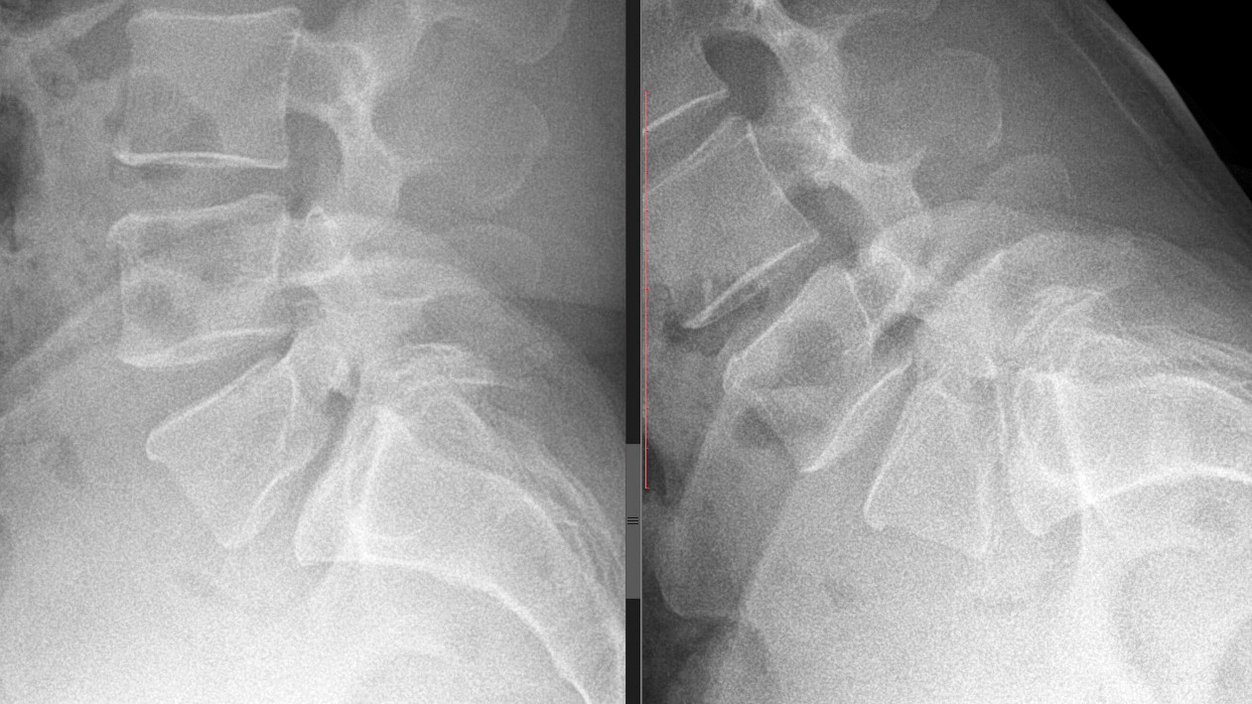
General symptoms and signs of cervical spondylosis
The process of osteonecrosis affects any part of the spine or several parts at the same time. The lumbar and cervical vertebrae are most susceptible to pathology because they are most susceptible to stress due to the anatomy of the human skeleton.
The consequences of cervical spondylosis in the neck area cause the most inconvenience and potential complications, because the neck is an area with many nerve pathways and blood vessels, many of which lead blood directly to the brain. ischemia of brain areas. In addition, the nerve roots that provide sensitivity and motor activity of the arms and shoulder girdle, when compressed by destroyed spinal discs, can present a diverse symptomatic picture.
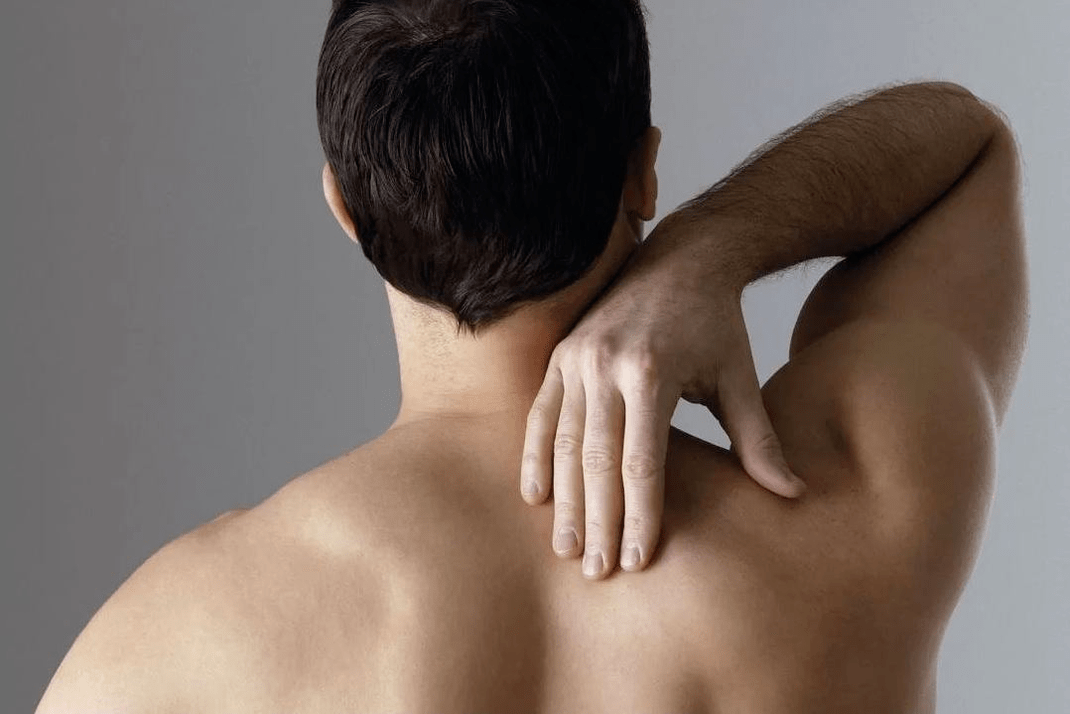
Signs of cervical osteoarthritis depend on which system of the body is affected by the pathology: Below we will consider the general clinic of cervical osteoarthritis.
Pain in the back of the head, neck and neck area
This is the most common symptom. The localization of the pain can last a long time, affecting the shoulders, collarbone area, and chest, turning into severe migraines.
The nature of the pain depends on the location of the injury and the severity of the pathology. In the early stages of the disease, the pain can quickly be transient, gradually becoming chronic and painful.
During exacerbations, the pain becomes intense, with increased neck muscle tone and limited head movement. . . Often, pain from cervical spondylosis can be localized behind the sternum, in which case many patients mistake this symptom for angina. It can be distinguished by taking a nitroglycerin pill - the pain from osteonecrosis does not subside.
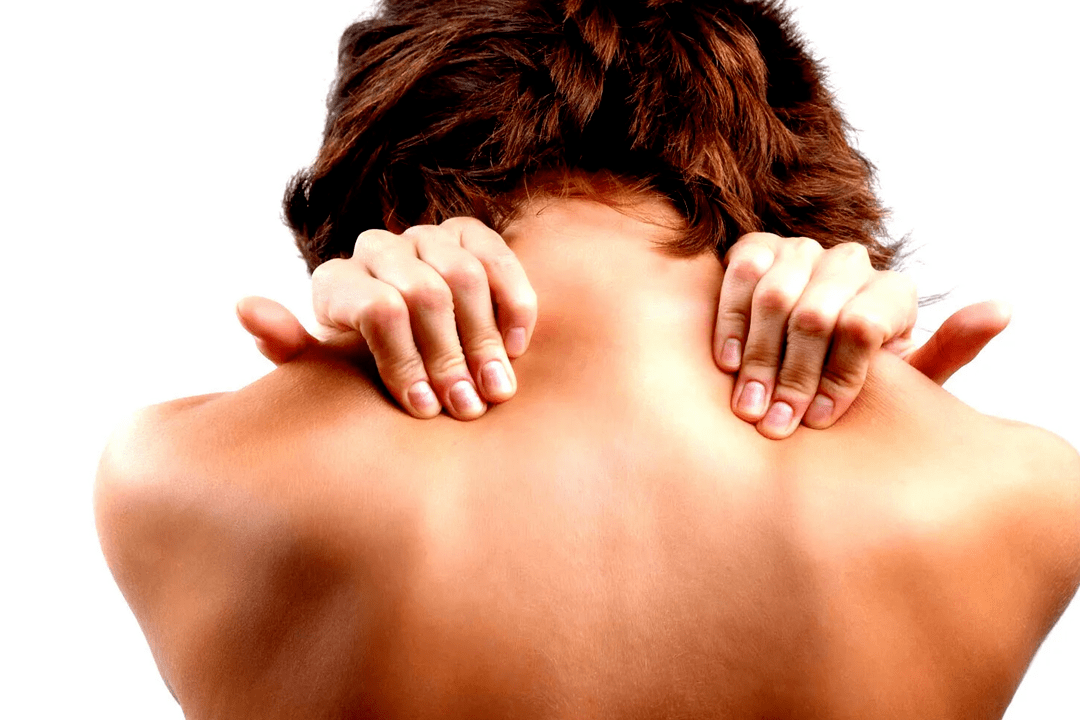
Noise, tinnitus, feeling of ringing in the ears
These symptoms are often accompanied by hearing loss. These phenomena are associated with a decrease in blood flow from the vertebral artery to the vestibular apparatus. This complex of symptoms is called cochlear or cochlear syndrome and it is not always possible to determine its connection with osteonecrosis of the cervical region. Specific signs to distinguish are the feeling of noise, congestion and ringing in the ears when changing positions, after a long time in one position.
dizzy
Dizziness is also caused by impaired blood flow to the organs of the inner ear, ensuring the body's balance. Dizziness is often accompanied by nystagmus - voluntary fluctuations of the eye pupils to the sides.
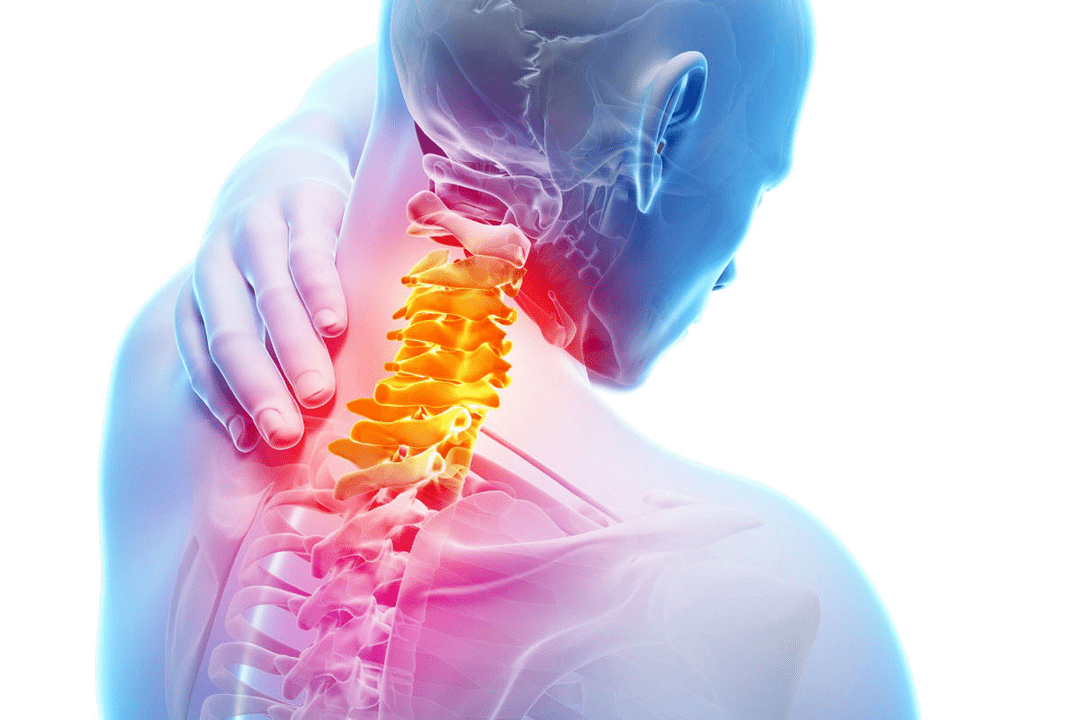
Airless
This feeling appears due to stimulation of the phrenic nerve endings. It is a component of the cervical nerve bundle and is involved in the regulation of breathing, its depth and frequency. The patient complains of being unable to breathe deeply. In some cases, symptoms worsen to the point of severe difficulty breathing and suffocation. For the same reason, nocturnal apnea and snoring may be observed. Lack of oxygen due to respiratory problems will eventually lead to increased fatigue, decreased concentration, and memory problems.
nausea
Accompanied by a belching sound. It is also caused by problems with blood circulation in certain areas of the brain and inner ear. Nausea is sometimes observed with uncontrolled vomiting, provoked by movements of the head and body. Frequent nausea and vomiting lead to decreased appetite, weight loss and nutritional deficiencies.
Vision problems
"Floating" in the eyes, decreased vision, fog before the eyes - these are all symptoms caused by ischemia in the part of the brain responsible for vision. Patients with osteochondrosis have fewer visual complaints because inadequate blood supply from the vertebral vessels is compensated for by blood flow from the carotid system. Glasses and therapeutic eye muscle exercises do not solve the problem; Vision often improves after treatment for osteoarthritis.
Blood pressure skyrocketed
Unstable pressure levels are due to impaired blood flow in the medulla oblongata, which is responsible for the functions of the vascular motor center.
Sudden fainting or fainting
Occurs when the cerebral artery spasms because blood flow through the vertebral artery is stopped for a short time. Patients can be quickly brought out of unconsciousness by lying them down so that their legs are slightly higher than their head - blood flow to the brain allows the person to regain consciousness. After a fainting episode, reversible problems with speech and movement may occur for a time due to a short stop in blood flow.
Throat symptoms
Often they may be the only sign of cervical spondylosis. Symptoms include pain, dryness in the throat, and difficulty swallowing. Symptoms are associated with compression of the nerve plexuses responsible for nerve distribution in the pharynx. It is necessary to distinguish such manifestations from a similar clinic with inflammation or neoplasia.
Increased body temperature
Increased body temperature for cervical spondylosis is not the most typical symptom, it is observed rarely and locally: in the neck and neck area, the skin is slightly red. severity varies, it depends on the stage of development of the pathology, as well as in the stage of exacerbation, they are brighter, and secondly, they develop into certain syndromes.
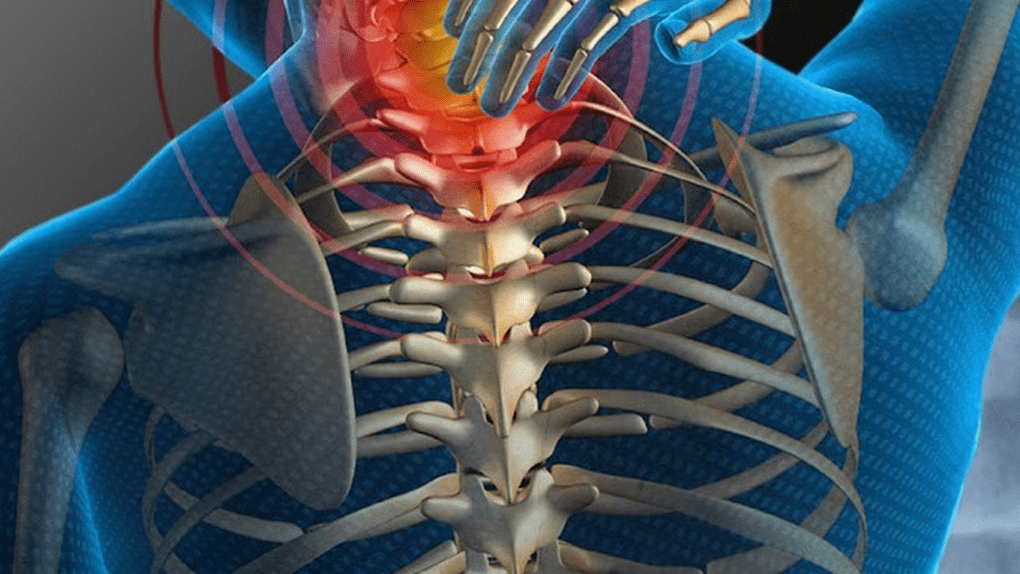
Symptoms depend on the stage of cervical spondylosis
Stage I: Begins the degeneration process in the cartilage of the vertebral disc. Symptoms are mild and sometimes may not be observed. Important: these symptoms become more pronounced when tilting the head.
As a rule, in the early stages of cervical spondylosis, patients do not go to the doctor because they believe that all symptoms are related to fatigue, stress, age, and lack of sleep. , the intervertebral space is narrowed and the collagen fibers of the annulus fibrosus of the intervertebral disc are destroyed. Noticeable pain symptoms appear due to pinched nerves, and the pain intensifies when moving the neck and turning the head. Here you can suspect cervical spondylosis, the symptoms of the second stage are as follows: 1st, 2nd, 3rd and 4th.
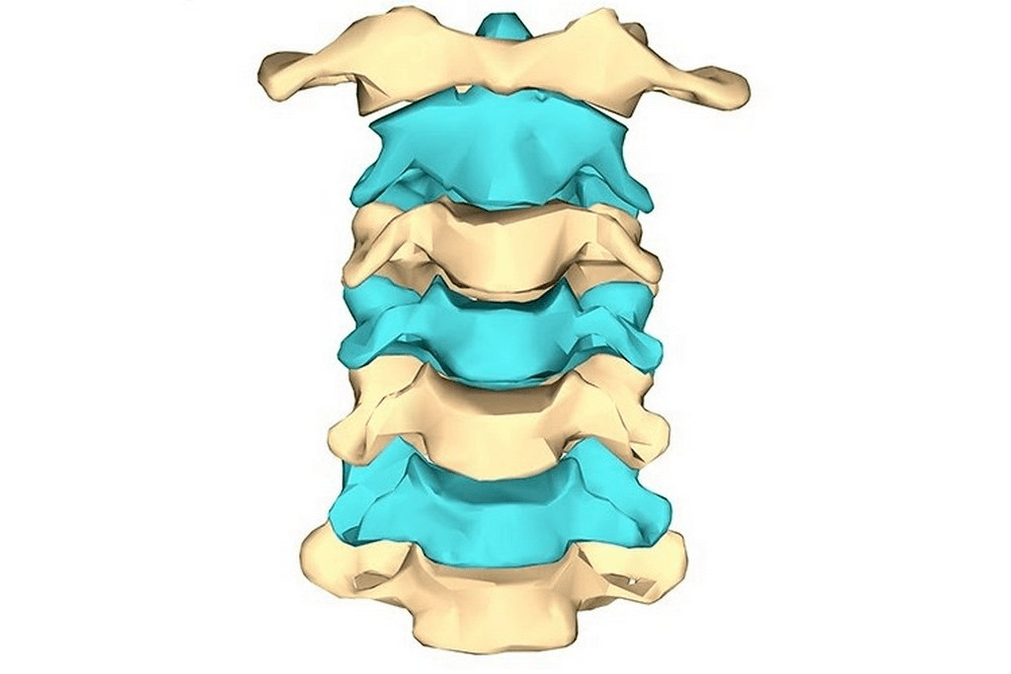
Keeping the head in one position for long periods of time leads to severe pain. At this stage of the disease, the patient went to the doctor for help. Stage III The fibrous ring in the intervertebral disc is destroyed, forming a hernia. In the third stage, the spine is deformed, displaced and dislocated due to their weak fixation ability.
This is the severe stage of the disease, the patient is no longer able to support his head on his own. Ischemia of the spinal cord and compression of the spinal arteries lead to paralysis and paralysis of other parts of the body and spinal stroke.
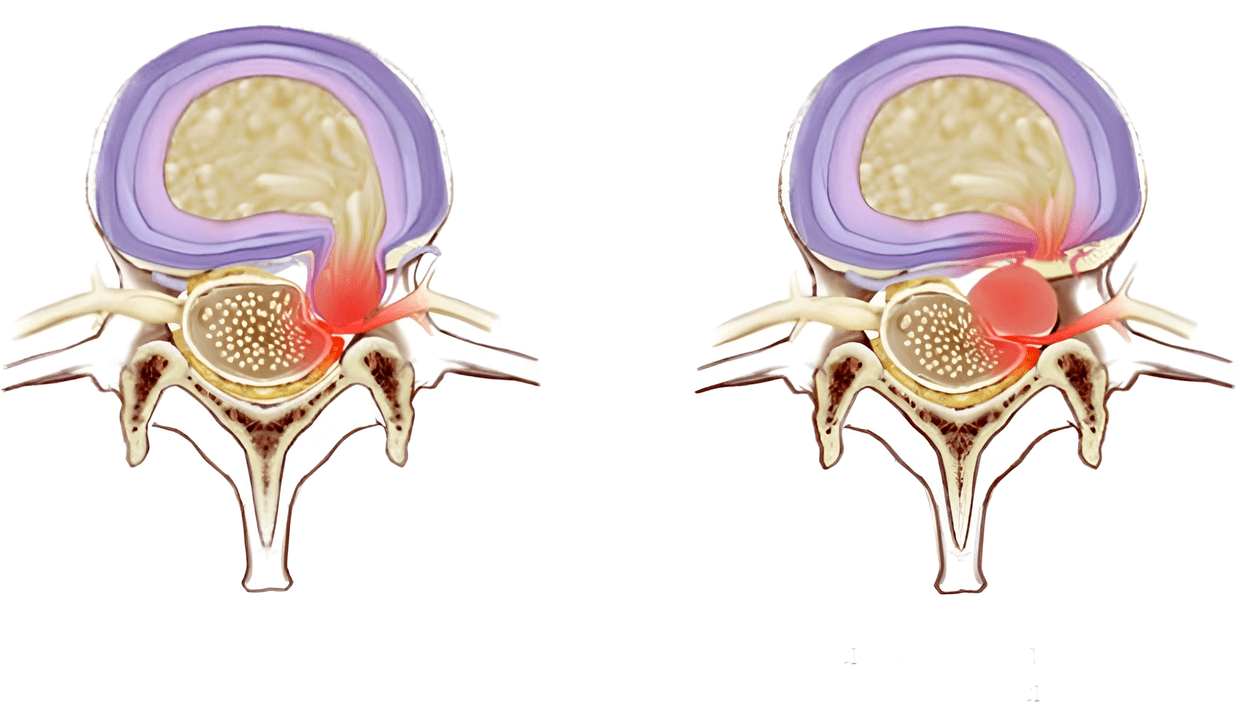
Syndrome due to cervical spondylosis
The non-specificity and large number of diverse symptoms that accompany cervical spondylosis make diagnosis and further treatment difficult because some of them can be signs of completely different diseases. together. Symptoms of cervical spondylosis fall into certain groups called syndromes. Their presence and severity may indicate location-specific cervical spine pathology.
Common syndrome groups:
Koreshkovy. Also known as cervical radiculitis. It combines symptoms related to compressed nerve roots of the cervical vertebrae. Characterized by "goosebumps" in the affected area, tingling in the fingers and forearms, and loose skin spreading to some fingers.
Stimulus-reflex. Burning and severe pain in the back of the head and neck, sometimes spreading to the chest and shoulders, occurs when the position of the head and neck changes, when you sneeze, cough or turn your head suddenly.
Vertebral artery syndrome includes:
Heart. A picture almost identical to that of angina often leads to incorrect diagnosis and treatment. The syndrome appears due to stimulation of phrenic nerve receptors, partly involving the pectoralis major and pectoral muscles. Therefore, contractions in the cardiac region are more reflexive, as a response to stimulation of the cervical nerves. Symptom:
Dysautonomia syndrome. Dislocation of the first cervical vertebra with displacement can lead to the development of vegetative-vascular dystonia. VSD is not a definitive diagnosis because it has no obvious symptoms.
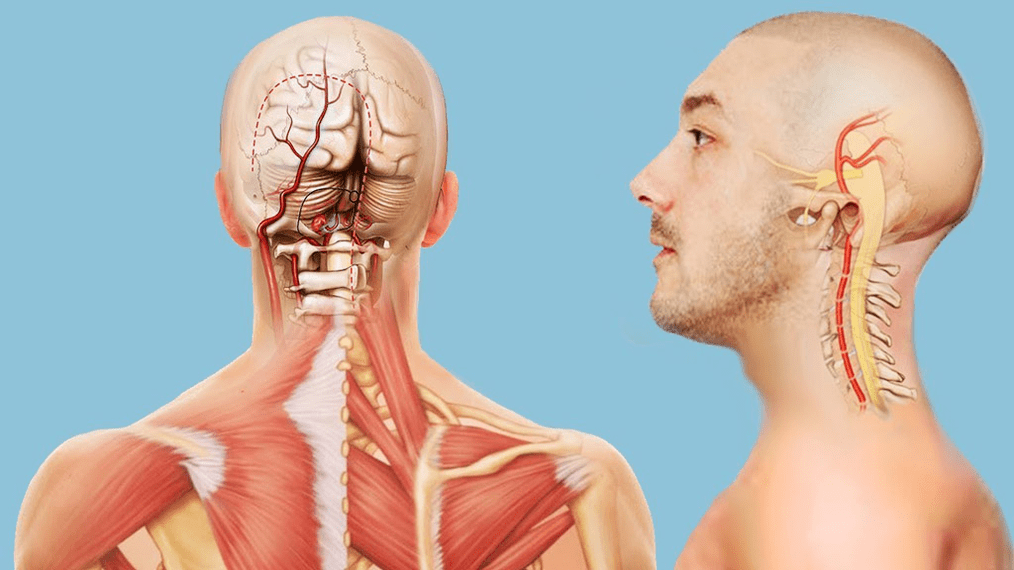
There may be neurological signs, symptoms of impaired cerebral blood flow, increased intracranial pressure, and muscle spasms. As a result, patient complaints include dizziness, decreased vision, loss of consciousness, headaches, and nausea.
How to treat cervical spondylosis
The spinal condition is described as a very serious pathology that, if ignored, will lead to disability and, as a result, severe cerebral circulatory disorders, leading to death. For this reason, you should not self-medicate if such symptoms appear.
In the early stages, treatment of cervical spondylosis is conservative, including taking medications: non-steroidal anti-inflammatory drugs, anesthetics, hormonal drugs, vitamin complexes, chondroprotectors - all thisreduces inflammation, pain, improves the fertility of soft tissue and cartilage. vertebrae.







































